
Tulalip Tribal Court New Website is Now Live

syəcəb

Please use the following link to download the October 12, 2019 issue of the syəcəb:
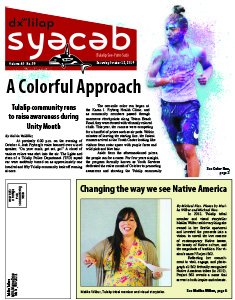
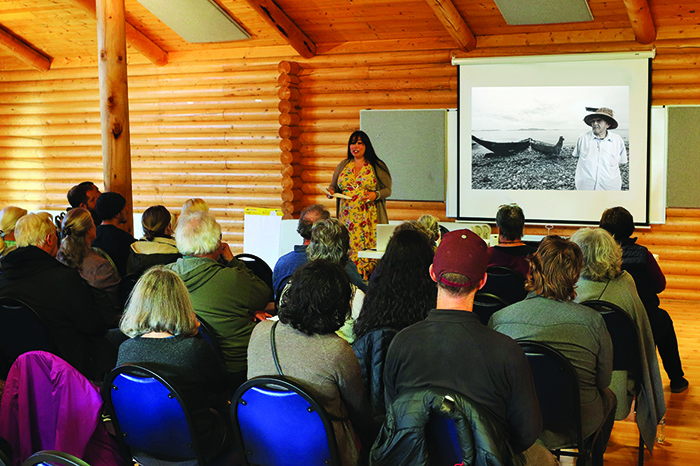
By Micheal Rios, Tulalip News. Photos by Matika Wilbur and Micheal Rios.
In 2012, Tulalip tribal member and visual storyteller Matika Wilbur sold everything she owned in her Seattle apartment and invested the proceeds into a vision: to unveil the true essence of contemporary Native issues, the beauty of Native culture, and the magnitude of tradition. Her vision’s name? Project 562.
Reflecting her commitment to visit, engage, and photograph all 562 federally recognized Native American tribes (in 2012), Project 562 reveals a name that serves to both inspire and educate.
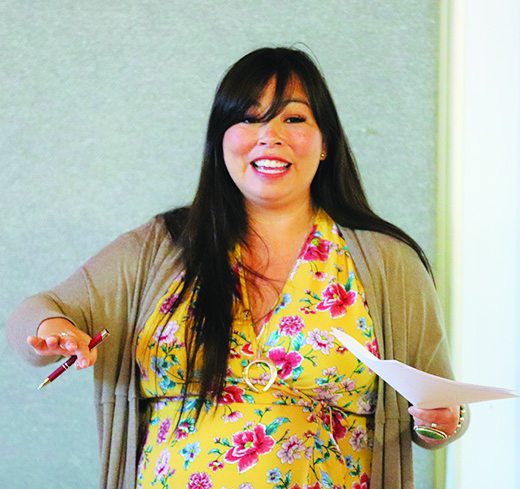
“While teaching at [Tulalip] Heritage High School and attempting to create a photography curriculum with a narrative that our children deserve, I found an outdated narrative,” she recalled. “It’s an incomplete story that perpetuates an American historical amnesia. It’s a story that’s romantic, dire and insatiable…it’s the story of extinction.”
Matika points out the extinction theme often associated with Native America is easily perceived by doing a quick Google Images search. If you search for ‘African American’, ‘Hispanic American’ or ‘Asian American’, then you’ll find images of present day citizens who represent each culture. You’ll see proud, smiling faces and depictions of happy families.
But if you search for ‘Native American’ the results are very different. You’ll see mostly black and white photos of centuries old Natives who are “leathered and feathered”. Making matters worse, you’ll also find more images of white people wearing headdresses than of modern day Native families.
“All of these images and misconceptions contribute to the collective consciousness of the American people, but more importantly it affects us in the ways that we imagine ourselves, in the ways we dream of possibility,” explained Matika.
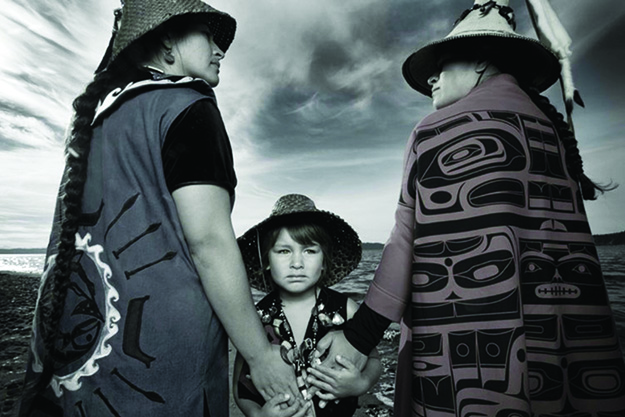
And so began her 7-year journey to photograph and collect stories of contemporary Native citizens from tribes all across the United States. As her photographic portfolio continued to expand, so too did her realm of possibilities.
Project 562 has driven her to travel hundreds of thousands of miles, many in her RV dubbed ‘the Big Girl’, but also by horseback, train, plane, boat and on foot across all 48 continental states, Hawaii, deep into the Canadian tundra and into Alaska. The number of federally recognized tribes has risen to 573, according to the Department of the Interior, since the inception of her vision back in 2012, but that fact is just superficial.
Presently, the now 35-year-old Matika has come to realize that Indigenous identity far surpasses federal acknowledgement. There are state-recognized tribes, urban and rural Native communities, and other spaces for Indigenous identity that don’t fall under the U.S. government’s recognition. Astonishingly, she estimates she has photographs that represent about 900 different tribal communities.
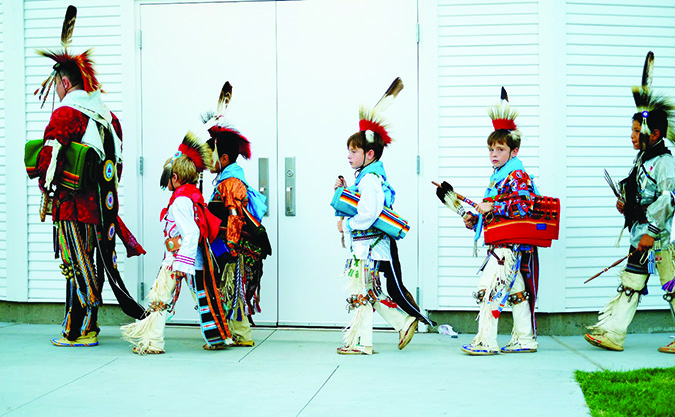
In a respectful way, Matika has been welcomed into hundreds of tribal communities, and she has found that people support the project because they would like to see things change. Conversations about tribal sovereignty, self-determination, wellness, recovery from historical trauma, decolonization of the mind, and revitalization of culture accompany the photographs in captions, videos, and audio recordings.*
“For the past six-years I’ve been sojourning in my big girl. It’s been a whirlwind of a journey, an amazing experience!” beamed the Tulalip photographer who routinely has her brilliant images displayed in museum galleries and college campuses across the nation.
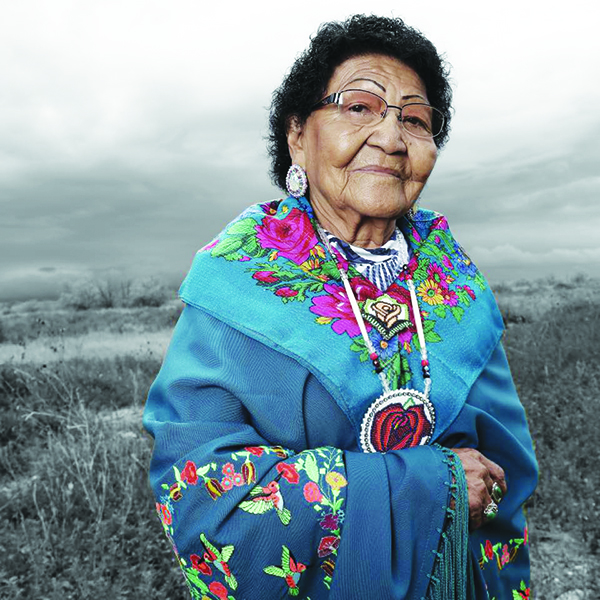
“I started in Washington and worked my way south through Oregon, California, Arizona, and New Mexico,” she detailed. “I went to all the pueblos, so many places in Navajo Nation, then down to the south and into the bayou. I continued on to the Everglades and then all the way up the East coast into Haudenosaunee country where I learned about the Great Law. I then zig-zagged across through the country until finally making it up to Alaska. Now, I am back home.”
She’s returned with an unprecedented repository of imagery and oral histories that accurately portray present-day Native America. Project 562 will ultimately culminate as an awe-inspiring hardcover, series of exhibitions and online resources filled with a dynamic variety of proud Native Americans telling their stories their way. But until that long-awaited day comes, Matika gave adoring fans and devote followers of her project a glimpse into her 7-year journey during the first weekend of October. From October 3 – 5, she held a four-part project preview at Northwest Indian College, Ferndale Library, Nooksack Community Building and the Deming Library.
The Project 562 creator spoke passionately at each venue while sharing stories about overcoming historical inaccuracies, stereotypical representations, and silenced Native American voices in mass media. She shared about meeting one of her real life heroes John Trudell, being at Standing Rock during the 2016 Dakota Access Pipeline protests, and offered powerful stories detailing Native citizens from around the nation rising up from racism and injustice to create a better world for themselves and future generations.
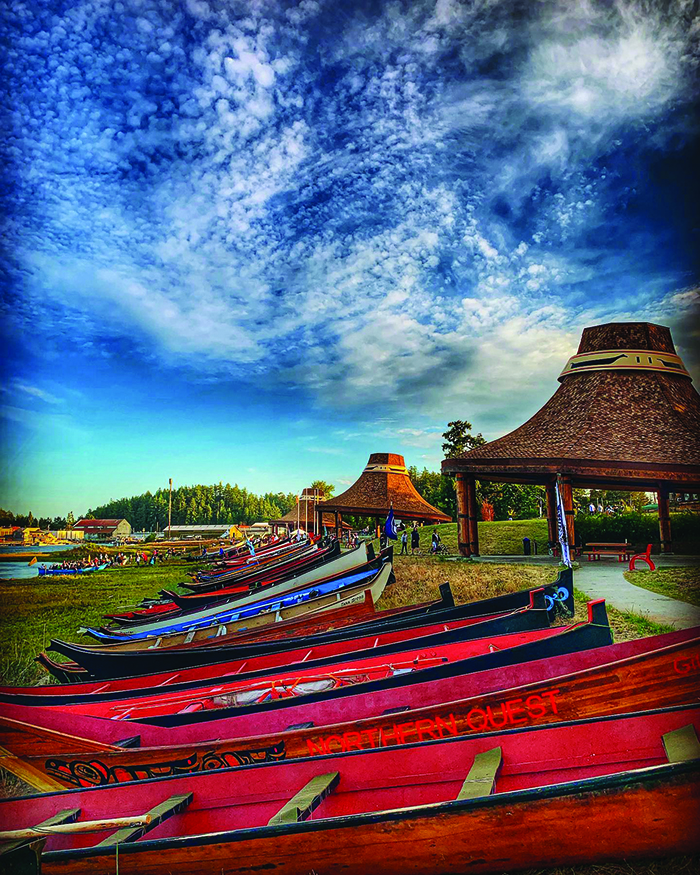
“If I’m here to bring a message at all, it’s the message that Indian Country is alive and well,” said Matika during her NWIC presentation. “It’s the message of hope and resiliency. It’s the story of Indigenous intelligence.
“There are still Ghost Dances, Sun Dances and long houses filled with songs and traditional medicines. Our story is worth knowing, telling, and inspiring one another with. Because doing modern things while gathering and encouraging the collective consciousness to uplift Indigenous intelligence is the only pathway forward. That is the dream.”
*Source: matikawilbur.com
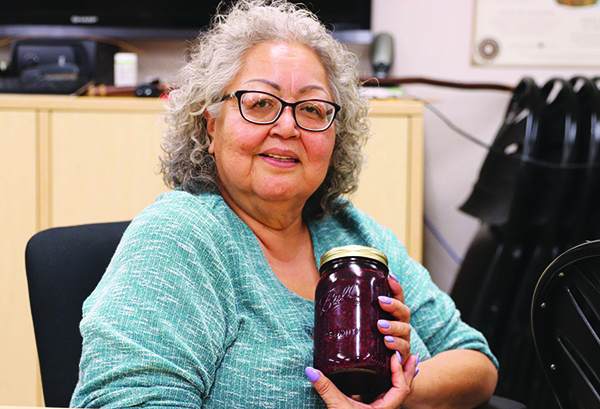
By Kalvin Valdillez, Tulalip News
“I remember my aunt, she stood up once to speak at a gathering. She was talking about our Indian food, or lack thereof, and asked ‘what am I supposed to feed my inner-Indian, spaghetti?” recalled Tulalip Elder and Rediscovery Program Coordinator, Inez Bill, while letting out a small chuckle. “That always stuck with me. And also, when Chief Seattle said, ‘when the tide is out, our table is set.’”
For nearly fifteen years, Inez has led the Rediscovery program, reincorporating a number of cultural aspects that were once considered common, back into the practices of the modern-day Tulalip tribal community. Through colonization, assimilation efforts and the decades of generational trauma that followed, many of these teachings were lost, or kept closely and taught within individual families.
A relatively recent revitalization resurgence saw the art, language and true history of the Northwest tribes come to light and today those cultural traits are often recognized and celebrated throughout the area. And while our lifeways such as fishing, hunting and gathering are rights that may be known to the general public, the spiritual connection to that work is an experience that is unique to the Coast Salish people.
The Rediscovery program has put an emphasis on helping Tribal members, youth to elders, experience that connection by hosting hands-on workshops at local events, teaming up with several departments to spread their teachings. If you’re lucky, you may have made lip balm or salves out of local Indigenous plants with Inez and her team, while learning about the medicinal purposes each plant contains. Or perhaps you attended Mountain Camp as a youth and learned the many uses of cedar, carving walking sticks and weaving baskets. The program also oversees the Tulalip family canoes Big Sister, Little Sister and Big Brother, awakening them every spring, preparing them for Canoe Journey and putting them back to rest after the summertime event ends.
“Our people have learned and passed things on generation after generation through oral teachings,” explained Inez. “Our teachings are not made up, I’ve heard what I heard many different times. If you go to Upper Skagit, Swinomish, Lummi, Tulalip, you hear the same thing and that’s how you know it’s a teaching.”
Inez is always willing to pass on her knowledge of traditional Salish foods. Long before western civilization arrived to the region, the land was abundant with resources, with tall cedar trees encompassing the land, huckleberries high up in the mountains, elk that walked amongst the forests and salmon that populated the Salish Sea in large numbers. The tribes of the Northwest cared for those resources, ensuring that their people would be provided with sustenance for generations to come.
“Native foods were how our people remained healthy for years,” she said. “As a young girl, I grew up going to the winter ceremonies at our smokehouse and celebrated the spiritual life. During those ceremonies, I worked in the kitchen with some of the older lady cooks. There are a lot of things I learned from them, as well as from my parents and grandparents. It was there where I learned how to gather and prepare some of our traditional foods.
“When we serve you our Native foods, we are giving you our very best. There are teachings and values that go with everything we do. From the hunter preparing for a hunt and the gatherer gathering, knowing it’s going toward a ceremony or whatever work that’s going to take place, that’s their gift to that occasion, to share in the gathering. There were times during my life where my family would host gatherings for namings, funerals, memorials and ceremonies. It was always important to have our Indian food there. I came to know and recognize the food, and you see those same foods today, our BBQ salmon, deer steak, deer stew, clams, canned fruit, clam chowder, oysters and crab. All of that not only provides nutrition for us, but it feeds our spirits and the spirits of our ancestors.”
Any given year there are several celebrations hosted within an Indigenous community and the meal is an integral piece to the ceremony. The food’s flavor, serving size and overall presentation speaks volumes about the hosting tribe. During smokehouse ceremonies, Inez explained that she and the other cooks would set a table full of traditional foods, specifically for the spirits of the Tulalip ancestors, early in the day before any guests arrived.
“We usually had the first table around three o’clock in the afternoon for our ancestors from the other side who came to witness the festivities going on. When we put the food out there, they’re the first to eat. Then when our visitors come, we serve them next, before we eat. We always prepare and serve our best and that shows that we are rich in our resources and shows that we are sharing with our people and visitors.”
Prayers and songs are offered before and after a hunt, thanking the land, Creator and the animal itself for the nourishment. And not an ounce of meat, hide or bone goes to waste; people fashion garb, jewelry and drums from the animal’s remains. And, although it varies from tribe to tribe, the Salish people hold annual Salmon Ceremonies, thanking the fish for its sacrifice at the start of each fishing season.
“How you prepare yourself to conduct that work is just as important as the hunt, as the harvest, if not more. That’s where the berry picking songs come from, to make the work easier and not so difficult. And whatever you’re harvesting, you never let it waste. You take care of it, you honor it, respect it and give thanks, because it will continue to provide for you into the future.”
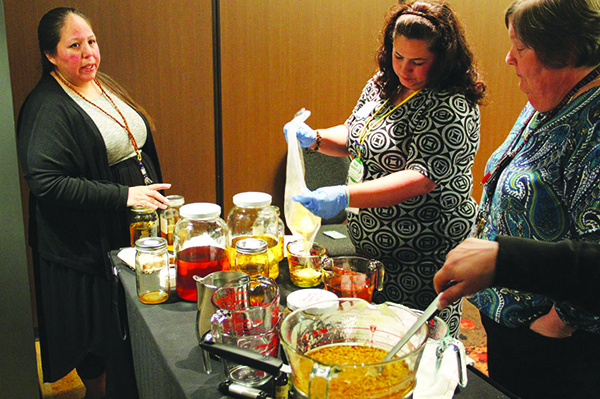
The Rediscovery program hosts traditional foods workshops and during these classes, Inez and crew provide the history of the Coast Salish foods while also showing their participants how the meals were prepared in ancestral time with bentwood boxes and cooking stones. They also prepare an assortment of food samples including teas, seafood, deer and elk meat, and usually a berry dessert concoction as well. Each dish is created combining traditional plants, herbs, berries, nuts and meat with the recipes that are popular in modern times.
“We are always experimenting,” Inez proudly stated while showcasing a large mason jar filled with a berry mixture. “I always wanted to make a pie filling, this was the first year we took time to make this. I think our pallets have changed a lot. Sometimes it’s hard to get people to try something unless its palatable. Our people didn’t have the modern convenience of table salt or pepper. So today, a lot of people will look at those foods and say they are unseasoned.
“If you look at other cultures, such as the Koreans and Germans they have sauerkraut and kimchi, foods that have been fermented. We had fermented foods too, and we haven’t done a lot of experimenting with those just yet, but we know they served a purpose. Like the sourness of Indian ice cream, a soap berry that’s whipped up to the consistency of whip cream. If you ate it today without using some sort of sweetener, it could be considered too sour by some. We like to add apple juice, it makes it more palatable, but I don’t think our ancestors added that to their recipe.”
Inez explained that she began blending traditional and modern recipes when her late husband, Hank Gobin, was diagnosed with diabetes.
“He wasn’t supposed to eat bread. I kept thinking of ways to get him bread. And I found a way to make flour out of hazelnut. It doesn’t have any salt or sugar and we grinded the nuts down to the consistency of flour. He was so happy to get that bread, and since then we kept on experimenting, trying to figure out how to make today’s recipes healthier for our people by substituting some of the ingredients with our Native foods. Or we’ll take a Native recipe and figure out how to cook it in an oven or on a stovetop.”
Today, many people around the globe are attempting to switch back to the traditional diets of their culture. For Native people specifically, that includes giving up many of those dishes that we formulated from government commodities, like frybread and hangover soup. The lack of access to healthy foods combined with the diminishing salmon and wildlife populations have caused serious, and often deadly, health issues throughout Native America. But since many tribes began educating their people about some of the dangers of modern processed foods and incorporating pieces of their traditional meal plans into their diets, diabetes and hypertension are on the decline for the first time in decades for Indigenous people as a whole.
Several tribal and Indigenous chefs have documented their journey in reclaiming food sovereignty. And more often than not, the individual claims to feel better and healthier. However, that is just a start. There are many foods that we have grown accustomed to over the years that can initially be hard to cut out. And until we do so, we may very well continue to have health concerns due to the way foods are manufactured and mass produced.
Now that we are in the middle of the hunting and gathering season, Inez urges the younger people to go out and experience the traditions of the Snohomish people, practice their treaty rights and help provide for their people.
“I marvel at the wisdom of our ancestors to include the right to hunt, fish and gather in the treaty because those are the lifeways of our people,” she stated. “It’s more important to share and do that work for the elders in your family or community in-need. It says a lot of a person who does that type of work. It shows that you must be good people, you listened and learned the teachings of our ancestors. When families do that, they are remembered and those good thoughts and feelings will bring a blessing upon them for sharing with the people. As far as an Indigenous community, that’s exactly what we want to happen. We should continue to rely on our Native foods; the fish, deer and berries. We can’t completely go back to the way it was for our ancestors, but if we went back to a-ways, then we would be a lot healthier.”
Please use the following link to download the October 5, 2019 issue of the syəcəb:
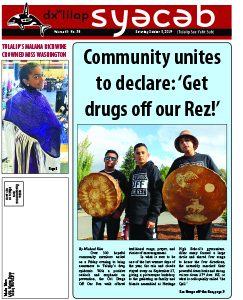
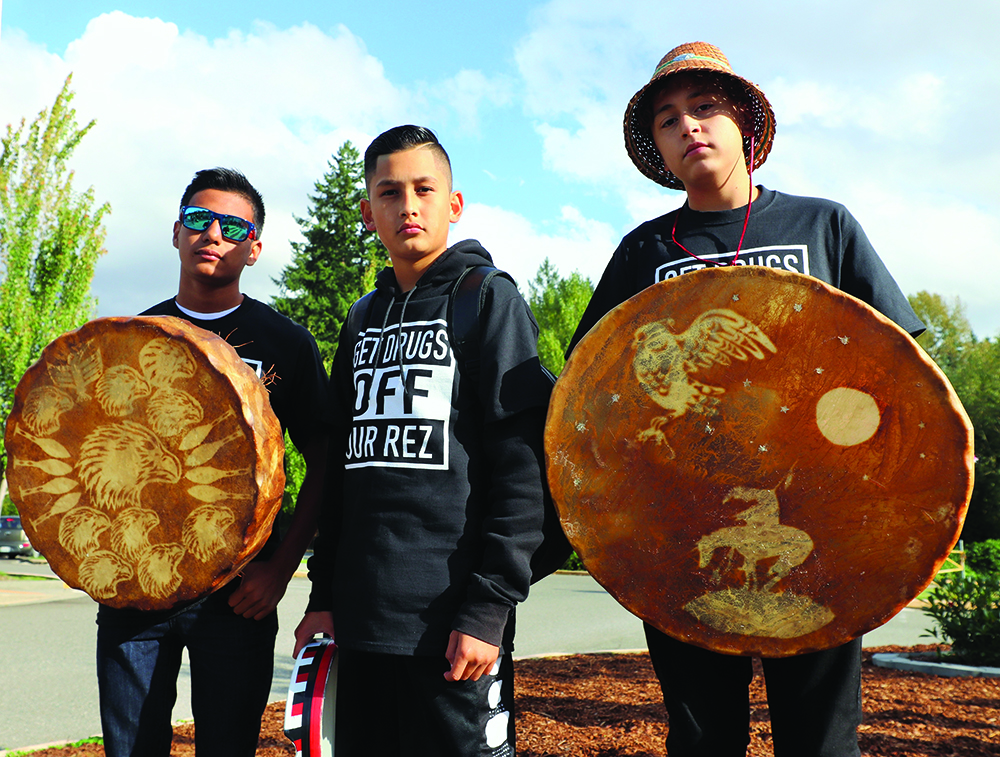
By Micheal Rios, Tulalip News
Over 300 hopeful community members united on a Friday evening to bring awareness to Tulalip’s drug epidemic. With a positive outlook and emphasis on prevention, the Get Drugs Off Our Rez walk offered traditional songs, prayer, and stories of encouragement.
In what is sure to be one of the last warmer days of the year, the rain and clouds stayed away on September 27, giving a picturesque backdrop to the gathering as family and friends assembled at Heritage High School’s gymnasium. After many formed a large circle and shared four songs to honor the four directions, the assembly marched their powerful drum beats and strong voices down 27th Ave. NE, or what is colloquially called ‘the Quil.’

“Today’s purpose was to raise awareness for all of our youth, our elders, and all of our community members. To recognize that there really is unity out here and our people are ready to come together and stay together to build a stronger future,” explained prevention walk coordinator Josh Fryberg. “Personally, I’ve lost family members to the drug epidemic and have other family who are addicted.
“My goal is to get them stronger and get them to where they need to be in order to beat their addictions,” continued Josh. “It comes full circle because by helping those that need our support the most, it shows our youth we still practice our traditional teachings and care for one another.”
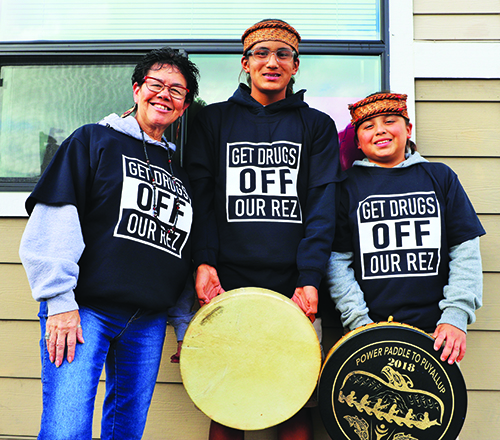
Local law enforcement, firefighters, and various Tulalip-based programs came together with the outpouring of community support to form one unified demonstration. Tulalip tribal members of all ages participated and showed their support for a shared mission by wearing a black t-shirt that stated with all capital letters: GET DRUGS OFF OUR REZ. As they marched down the Quil many local commuters cheered from their cars, while others stood outside their residence to take in the awe-inspiring scene.
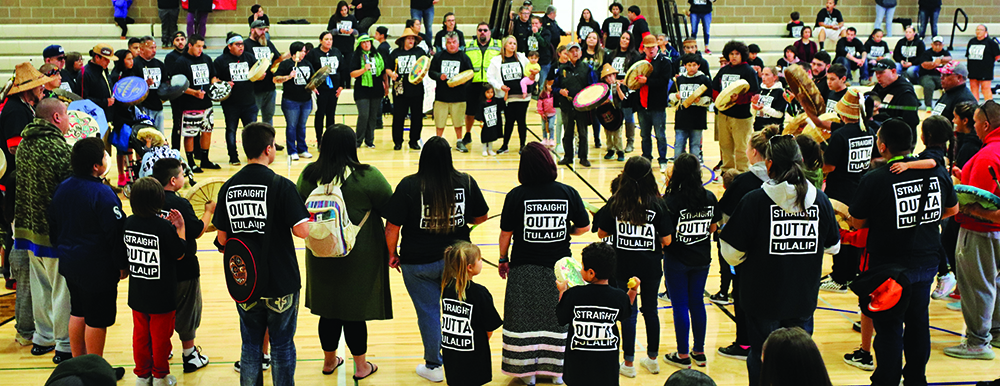
Walking their talk. Voices from the march:
Jobey Williams: “Our ancestors fought for us. They fought for us to have what we have today, and to see so many gather here today to get our people clean means a lot. It shows we’re still willing to fight for one another and get our people together on the right path so we can walk as one. This is just the start, only the beginning, but we are going to get our people back. We are going to help the ones suffering and get them back in the sacred circle.”
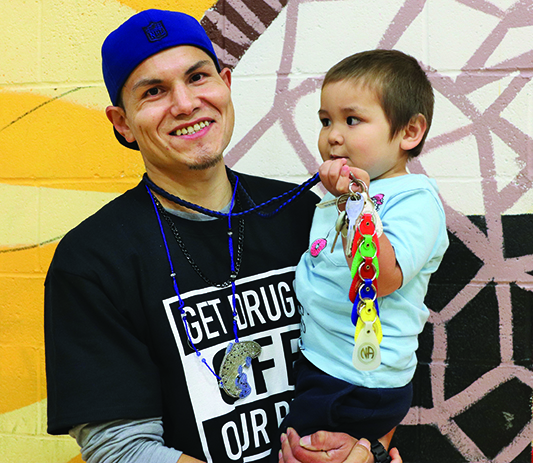
Gerald Williams Jr., with his son Gerald Williams III, celebrated graduation from Wellness Court: “Two years ago I was really bad into my addiction. I weighed something like 110 pounds and using so much drugs that they nearly killed me,” shared Gerald. “Next thing you know my son was born and reality set in that I needed to get clean for him. My father was an alcoholic and his addiction killed him when I was young. I didn’t want my son growing up with that same story so I set out to get clean. It was a struggle and wasn’t easy at all. I had to go through treatment two times to get it right, but eventually it stuck and now I can show my son a better way to live. I’m really grateful for Wellness Court and everyone who helped me get here today.”
16-year-old Kaiser Moses, youth council representative: “When it comes to the drug epidemic, I’ve seen a whole lot and heard much more about what it has done to us. Drugs are keeping us to the sins and vices of the Earth. We need to separate ourselves from that because our ancestors wanted us to be pure and to keep our teachings alive. Our teachings aren’t heroin needles or alcohol. Drugs, alcohol, cigarettes, vaping…all of that is like a snake. You never want to pick up the snake because it will bite you and coil around you, preventing you from being on the good path and walking the sacred road.”

Tulalip Bay Firefighters Peter VanLunsen and Dane Zirwas: “It really empowers us and gives us great pride to serve the community. We often have to respond to not favorable situations, but being here today with the community is a tremendous opportunity.”
Benjamin Deen walked alongside his mother as they both celebrated being clean and sober: “This is so big for our community. This walk is for the future of our children and young ones. I’m carrying my N.A. chips because they remind me that this process is one day at a time. So far I’ve earned my 30-day, 60-day, 90-day, 6-month, 9-month, 1-year and 18-month chips.”

Donald ‘Penoke’ Hatch, Tulalip elder: “When we say drug epidemic we are referring to the heroin, opioid-based pain pills, and cocaine that is sold to our people. It’s poison. The whole community has to help out to solve this problem. If you see things in the neighborhoods, next door, or in your own house, then you have to be willing to talk about it and call the police. I worked hard with one of my children and still lost him, so I know how difficult it can be. Drugs and being addicts isn’t the traditional lifestyle of us as Native Americans. And in order to rid our reservation of those things we have to be willing to speak up and tell on those up to no good. If we’re not willing to do that, then we will continue to have drugs on our reservation. It takes the whole community being on the same page to end this epidemic.”

Please use the following link to download the September 28, 2019 issue of the syəcəb:

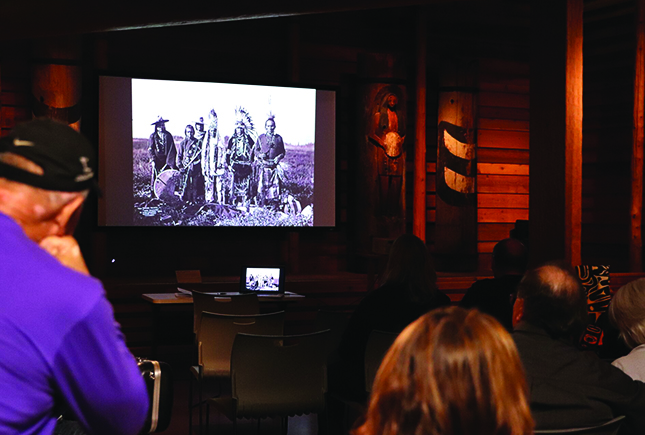
By Kalvin Valdillez, Tulalip News
Cinephiles from near and far gathered at the Hibulb Cultural Center (HCC) on the afternoon of September 21. The always popular film festival welcomed the works of local filmmakers who wished to showcase their modern storytelling abilities with the community. Each year, word about the festival spreads throughout the region, continuingly expanding the list of films on the following year’s docket. Now in its seventh year, the festival saw its largest attendance, as well as the largest number of film submissions to date, supporting local artists and encouraging them to share their stories through film.
“The inspiration behind the festival initially was to celebrate films and filmmaking, to showcase communities in our area and around the world the values that keep them moving forward, and to elevate the perspectives and voices of our community and our ancestors,” said Lena Jones, film festival organizer and Hibulb Cultural Center education curator.
The festival began with a lifetime achievement award ceremony, honoring two Lummi tribal members for their work in the film industry, actor and storyteller Swil Kanim and playwright and filmmaker Darrell Hillaire. Both individuals are locally renowned. Swil is known for many his talents as a violinist and Darrell is the founder and executive director of the multimedia production company, Children of the Setting Sun, which produces contemporary Coast Salish content on film and podcasts. Darrell also allowed HCC to hold an exclusive screening of his new thirty-minute project, Waiting for God, a story of a young Lummi girl’s journey to finding herself, as well as the way back to her ancestral homelands.
“I had the honor of being recognized today, but I represent a whole team,” Darrell expressed. “I’m proud of our team because we’re in the middle of a lot of work and we don’t get to celebrate enough, so we came here to celebrate with the Tulalip people and it means a lot to me. We try to meet the young people where they’re at, with all the technology of today like podcasts and short films, and introduce them to the stories of our ancestors. This a great way to preserve history. As our elders move on to the next life, we need to capture their stories about their time here.”
It was showtime after festival-goers enjoyed a lunchtime feast prepared by Tribal member Chandra Reeves and her daughters, one of whom gave a heartfelt welcome speech to the visitors. For nearly six hours, the attendees were treated to a selection of visual art created by ten filmmakers, both tribal and non-tribal. This year’s viewing had a good amount of variety, ranging in a number of genres, for a total of eleven films.
Inspired after his first submission received a standing ovation at last year’s festival, local music composer and film scorer, Ed Hartman, returned with two new projects this year, including Time for No One, a four-minute short film where Ed displays his piano skills set to images of the World Trade Center. Perhaps his most impressive piece submitted thus far, Ed worked diligently for an entire year, preparing a scored edition of As the Earth Turns, an unreleased Seattle-based silent film made in the late 1930’s. Ed’s music had movie goers on the edge of their seats during suspenseful moments, and fully invested throughout all of the movies emotional scenes.
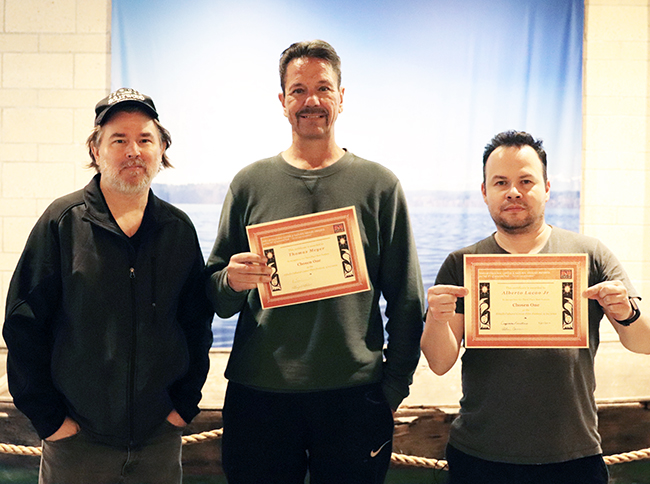
A crowd favorite this year was a fantasy film which involved a battle between elves and vampires titled Chosen One. Written and directed by Thomas Meyer, Chosen One has been featured at several national and international film festivals, winning awards for Best Fantasy at many of them.
Music, paintings, carvings, treaty rights and decolonization were the topics highlighted by eight Native American filmmakers who submitted one project each this year. Over the years, HCC has made it a point of emphasis to encourage local Native creatives to explore the medium of film to express their views and share what it means to grow up Indigenous in the Northwest.
“We’re very proud of our artists and storytellers,” Lena stated. “They remind us of how wealthy we are and how important it is to remember our values. Filmmakers, as artists, help us do that as they share the stories and heroes of our culture. They give us role models of how we can support our environment or our community.”
The art of storytelling has been passed down through the generations since the beginning of time. Our stories are shared to teach youth valuable lessons and they often incorporate our traditional language, dances and songs. Indigenous stories explain the mysteries of the universe like how the sun, stars and moon came to be and emphasize cultural values like respecting our elders, helping our communities and practicing our ancestral teachings. As technology advances, storytellers will continue to explore new forms of storytelling through art, publications, music, film and animation. Attention will be brought to social issues and current world problems like climate change, declining fish runs, MMIW, suicide and overdose, promoting awareness to protect our people, waterways and land, and begin the healing process from years of generational trauma.
Among the many standout Native films was a documentary called A Quiet Warrior, which follows the life and works of the late and highly respectable leader of the Yakama Nation, Russell Jim. Russell was an environmental activist who dedicated his life to protecting the Colombia River waterways. During World War II, a nuclear reservation was established in the nearby town of Hanford where they produced plutonium. Russell fought the U.S. Department of Energy in court to prevent Hanford from becoming a repository for nuclear waste and endangering salmon and local wildlife and habitat.
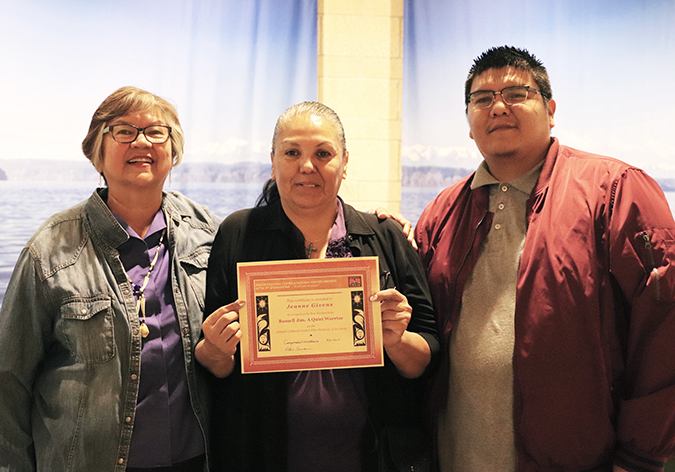
“I met Russell several times and I found him to be such an intriguing individual,” said filmmaker and Coeur d’Alene tribal member, Jeanne Givens. “He was a person who walked in so many worlds, most importantly the political world. He didn’t just know political people, he helped write the Nuclear Waste Regulatory Act, very important work.”
While the film festival carried on through the night, the crowd enjoyed thought provoking and interesting pieces that touched on the effects of colonization, such as We Only Answer Our Land Line by Cherokee and Klamath tribal member Woodrow Hunt, and the two-hour award winning special feature ωαατšι?αƛιν: Coming Home by Brandon Thompson of Huu-ay-aht First Nations. HCC was also sure to incorporate Indigenous art into the program with Makah War Clubs by Jason Roberts, which delves into the traditional weapons of Northwest tribes as well as A Modern Creation Story, which follows Tlingit Artist, Preston Singletary, as he combines the past and the present by creating traditional designs through glass art.
Perhaps the film of the evening, the reception of Could You Imagine? came just as much of a shock to the filmmaker as it was to the attendees. As the five-minute video ended, nearly every person in the HCC Longhouse exchanged stunned looks after they witnessed the works of an artist by the name of MomentumX. Combining many elements of his background, MomentumX incorporated his Swinomish heritage, passion for music, artistic abilities and storytelling talents into one project. Between two long thirty-two measure rap verses, he urged his audience to study their treaty rights and utilize the power of their voice. Not only was MomentumX rapping in the video, he was also spray-painting a large 3-D Salish design onto a canvas. The time-lapse music video impressed the festival attendees who erupted in loud applause by the end of the film. And when Marcus Joe, a young man who sat at the back of the room, introduced himself as MomentumX the crowd rose to their feet and praised him for his talents.
“It’s important that we use our own voice and create our own art,” Marcus expressed. “As an Indigenous youth who grew up in the big city of Seattle, a lot of times I felt alienated and alone. But I always knew who I was and was proud to be Indigenous. It’s important that we tell our stories, our true story, because it was already told wrong once. It’s up to us to set the record straight and let people know who we are in today’s society.”
“He did all of that on his phone,” said film festival judge, Robin Carneen, still in awe over the MomentumX video. “A hip hop Native American film, wow. It just goes to show how prevalent technology and social media is today.”
The film festival aims to preserve the traditional teachings of Native peoples in a modern day format that future leaders can look back to reference or draw inspiration from.
“We hope folks watch the films and are inspired to recognize how important our ancestral culture is to the recent environmental and cultural needs of the nation,” Lena stated. “We hope our younger ones will build their storytelling and technical skills and support their elders work in the communities by sharing important Native perspectives. We hope filmmakers will continue to share their work here and come together for an enjoyable day, viewing the films at our festivals.”
The Hibulb Cultural Center will continue their monthly film series, the next event is scheduled for October 17. For more information, please contact the museum at (360) 716-2600.

By Micheal Rios, Tulalip News
The Tulalip Boys and Girls Club has served as a model for those working to improve the lives of young people in the surrounding communities since 1997. ‘The Club’, as it’s affectionately been dubbed by the hundreds of children who attend daily, is a safe place where children can just be kids. While there, children are routinely exposed to healthy food choices, create an abundance of happy memories, and make relationships that last a lifetime.
Thousands of young minds have been significantly impacted via the Club’s encouragement and support over the past twenty-two years. On September 18, that support system received a major upgrade when the doors were opened to a 4000-square-foot expansion known as the Multimedia Teen Center.
“Our organization is proud to be a partner with Tulalip and those roots go back a long way,” explained Bill Tsoukalas, executive director of Snohomish County Boys and Girls Clubs. “From day one, our shared vision has been to keep our kids safe and healthy because we want them to graduate high school and go onto college so they can come back as future leaders.
“We have stayed committed to that vision and this Teen Center takes it to another level,” he continued. “Tulalip continues to lead with this Multimedia Teen Center because it is the best. It’s not only the best in our organization or in Indian Country, but it’s the best in all of Boys and Girls Club country.”
A state-of-the-art tech center designed to accommodate an ever-growing teenager membership, it houses six Xbox One gaming stations complete with 4k TVs, a dedicated high-speed internet server, and a sound system that rivals most music studios. Cyber Café functions as a self-serve healthy snack bar, a SMARTfit multi-station trainer is wall mounted for the perfect training solution for large groups and team building, and a makeshift graffiti wall is available for those artsy types who can create masterpieces with just chalk and their imagination.

There are conventional games as well, like a pool table, large chess setup, foosball table, and tic-tac-toe for those who prefer their games of skill without computer assistance. A dedicated homework area consists of several computer stations equipped with all the necessary programs to meet the coursework demands of today’s teens, while also aiming to shrink the reservation’s homework gap.
According to the Pew Research Center, roughly one-third of households with children ages 6 to 17 and whose annual income falls below $30,000 a year do not have a high-speed internet connection at home. At its most extreme, the homework gap can mean that teens have trouble even finishing their homework. For that division of teens who say they are often or sometimes unable to complete homework assignments because they do not have reliable access to a computer or internet connection, the Club’s homework station’s significance cannot be understated.
“This is for our kids,” said board of director Marlin Fryberg. “We have a Teen Center with our Youth Services department and our kids, no matter if they are at that building or this one, the priority is to keep them together and safe so they can have fun. With these computers now available they’ll be able to learn, too.”
At the time of this article, there are a whopping 535 Tulalip citizens between the age of 13 and 19 that need all the support they can get in order to compete in an ever tech-centered world. The Club’s Multimedia Teen Center was designed with every detail keeping them in mind. Five-years of planning and attention to digital trends has paid off big time.
Josh Miranda attended the reservation’s Boys and Girls Club since moving to Tulalip in 2013. He spent nearly all his teenage years being a Club kid and now works as a club assistant. He says of the new teen addition, “The designers really hit it spot on because there is something for everybody with all the different types of gaming. I definitely plan on hanging out here after I clock out.”
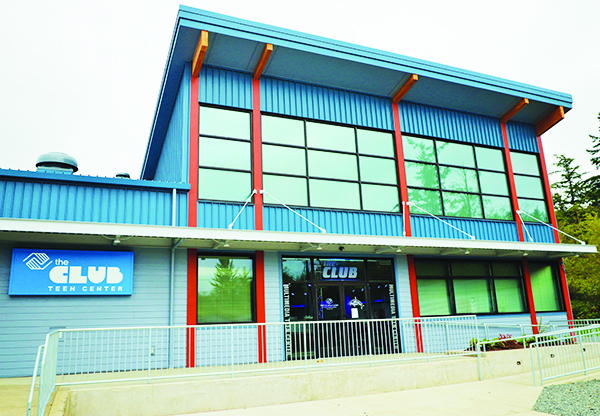
The Club is the first of its kind to be built on tribal land in Washington. After twenty-two years of commitment to the community it continues to get better and serve the needs of Tulalips’ youth. Through before and after school programs, it aims to help young people improve their lives by building self-esteem, developing values, and teaching skills during critical periods of growth.
“With my staff we take care of and look out for every single one of the 400 or so kids who come through our doors every day,” beamed Club director Mark Hatch. “We try our best to meet their needs top to bottom. Whether its sports, art, music or now a multimedia center for teens we are always trying to hone the highly intelligent minds of our kids.”